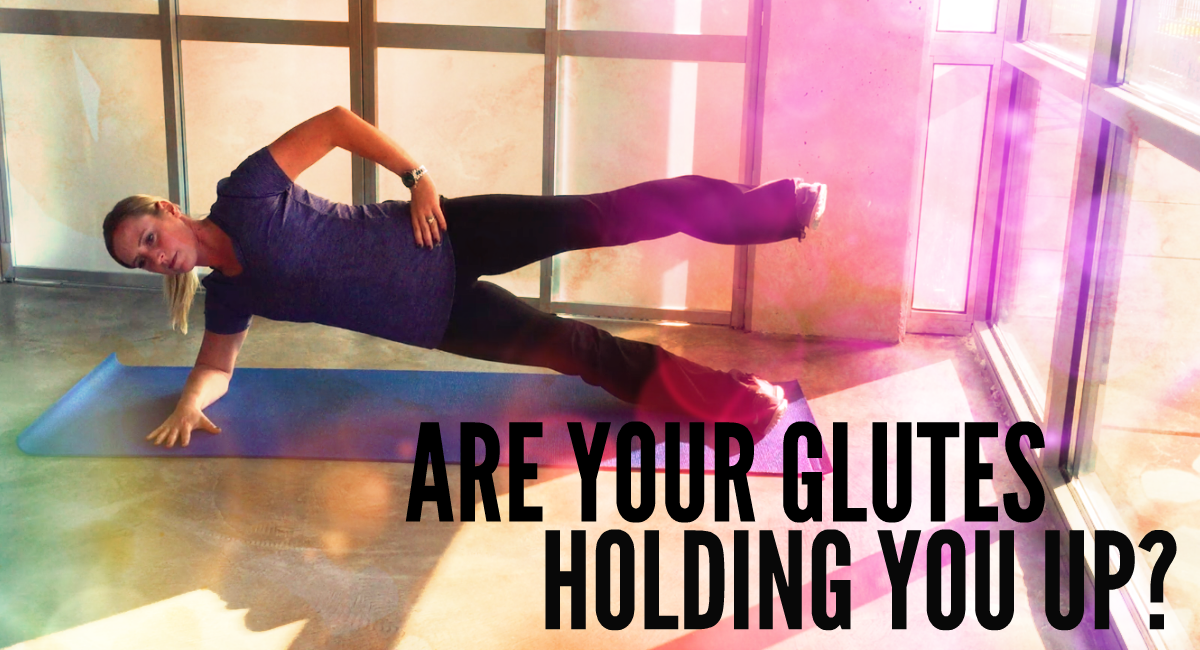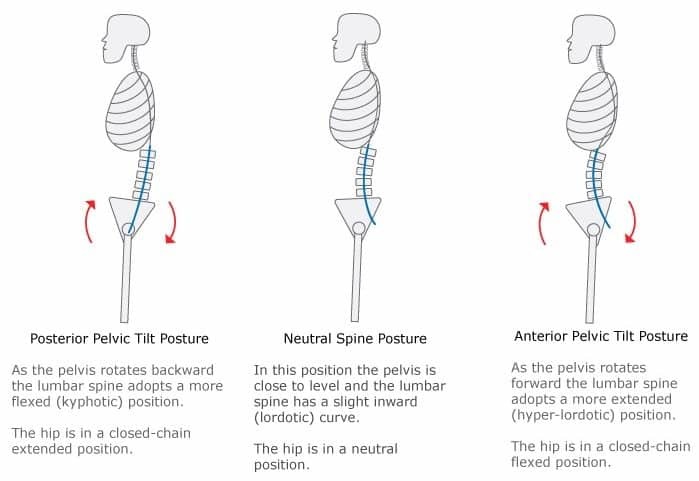Why Everyone Needs Stronger Hips + Glutes

Most of us aim to strengthen hips and glutes, as they are more than looking good in a pair of yoga pants. When combined with the core, they are the basis for all of your motion and stability. They help support the low back, create explosiveness, propel you forward and allow you to stand up straight. Your glutes are also the primary stabilizer of your lower body — do you ever run, jog, or hop? Your glutes are the reason you can balance when one leg is off the ground! Studies have shown that weakness in the hips has a direct correlation with knee pain, shin pain, hip pain, ankle pain, and low back pain. Restrictions in the hips can even be responsible for shoulder and elbow pain!
In order for your hips to function appropriately — that is, support the pelvis and the low back — they need to be balanced in terms of both mobility/flexibility and strength. Let’s look at first at a side view of the pelvis and the relationship between the glutes/abdominals and the hip flexors/low back. Here’s an example of a neutral pelvis versus a pelvis in anterior tilt or posterior pelvis tilt.
Now let’s look at the glutes in terms of lateral movement and their relationship to the knees and feet.
The gluteus medius and minimus don’t get as much attention as the larger gluteus maximus, but they’re just as important. The glute med and min are important abductors of the hip — this means they pull the leg out to the side, away from the body. Hip abduction is particularly important in walking and running. When your right leg advances, your left abductors have to fire in order to keep the pelvis or the knee from falling into the space left behind. They also control the position of your knee while standing. Look at the figure below. If the hip abductors are unable to control the lower limb, the thighbone (femur) has a tendency to collapse towards the midline, causing a knock-knee, also referred to as valgus or medial collapse. This positioning is related to pain at the front of the knee, is one of the primary risk factors for ACL tears and IT band syndrome, ankle tendonitis and plantar fasciitis, and increases the risk of knee arthritis.
4 quick hip tests
Thomas test:
Lie on your back with your butt at the very edge of the table. Hold your knees in your hands with your hips flexed. Now let one leg extend down off the table with a relaxed knee. Don’t allow your back to arch at all. Can you bring your leg flat to the table with your knee pointed straight ahead? You pass.
Common errors:
Leg can’t touch table or back can’t stay flat on the mat: tightness in hip flexors/abdominals/quads
Leg wings out away from the body: tightness in lateral quads or ITB
Leg can only stay flat if the knee is extended: tightness in quads
Staff pose/long sitting test:
Sit on the ground with your legs together and straight ahead, toes pointed up. Sit up tall with a neutral spine and place your hands on the floor at your hips. Got it? Pass.
Common errors:
Unable to keep the pelvis from rolling backward: tight hamstrings/glutes, weak low back muscles
Unable to sit up straight: tight hamstrings, weak lower back, tight pecs
Unable to keep toes pointed up: tight calves
Unable to keep legs together: weak inner thighs
Single leg squat test:
Put a sturdy chair or box behind you for safety. Stand with arms extended at shoulder height or overhead. Balance on one leg with opposite leg extended out front. Squat down as far as possible, with back straight and stance knee over the third toe. Raise body back up to original position until the knee and hip of supporting leg is straight. Can you do this at least 5-10 times with good form (keeping your shin vertical and getting your thigh parallel)? You pass. (And this is hard, so nice job!)
Common errors:
Trunk shifts to one side, one hip drops lower than the other, or knees collapse in toward big toe: lack of hip stability/strength, particularly in glutes/abductors
Knees move forward over toes: quad dominance
Single leg glute bridge test:
Lie on your back with knees bent and feet flat on the floor. Lift the hips off of the ground. Then raise one leg and hold. Lower the leg down. Repeat on the opposite side. Can you hold your pelvis level and feel your glute max firing, with no tightness in the low back? Great job! You pass.
Common errors:
One side of your pelvis drops or pelvis wobbles: lack of hip stability/strength
Hamstring cramps: glute weakness, hamstring dominance
Tightness in the low back: overuse of low back muscles, tight hip flexors
